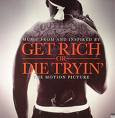LONDON, Jan 27 – Barack Obama inherits an economy already contracting at an annual rate of 6 per cent, much like the mid-Depression year of 1931 (-6.4 per cent). This may beat Germany (-7 per cent), Japan (-12 per cent) and Korea (-22 per cent) over the fourth quarter.
But that merely underlines the dangers ahead as the collapse of global trade chokes the mini-boom in US exports, setting off another stage of the crisis.
The US is losing 500,000 jobs a month. Brazil lost 650,000 in December. Beijing says 10 million Chinese have lost their jobs since the crunch began. Japan’s exports fell 35 per cent last month, year-on-year. The central bank is printing money furiously, buying bonds to prevent a relapse into deflation.
So yes, it is like early 1931. Citigroup and Bank of America have more or less disintegrated. JP Morgan’s health is failing fast. General Motors and Chrysler survive only on life-support from the US taxpayer.
But it is not yet like 1933. That second leg down was the result of “liquidation” policies by a Dickensian leadership blind to the dangers of debt deflation. By then, the Gold Standard had degenerated into an instrument of torture. It forced the Fed to raise rates from 1.5 per cent to 3.5 per cent in October 1931 to stem gold loss, with predictable results for shattered banks.
It is worth glancing at the front page of New York Times on Monday, March 6, 1933 to see what the world looked like three days after Franklin Roosevelt moved into the White House.
The newspaper splashed with the story that FDR had closed the US banking system – invoking the Trading with Enemies Act – and ordered the confiscation of private gold. From left to right, the headlines read: “Hitler Bloc Wins A Reich Majority, Rules Prussia”; “Japanese Push On In Fierce Fighting, China Closes Wall, Nanking Admits Defeat”; “City Scrip To Replace Currency”; “President Takes Steps Under Sweeping Law of War Time”; “Prison For Gold Hoarders”.
President Obama faces a happier world. The liberal economic order is still intact, if fraying at the edges. Capital and ships move freely. North America and Europe talk the same political language. China has so far proved a dependable pillar of the international system.
But then the world seemed benign enough in early 1931. It was the second phase of depression that did terrible things.
Roosevelt took over a country where the economic machinery had completely broken down. The New York Stock Exchange and the Chicago Board of Trade had closed. Thirty-two states had shut their banks. Texas had restricted withdrawals to $10 a day.
Few states could borrow on the bond markets. Illinois and much of the South had stopped paying teachers. Schools closed for months. An army of 25,000 famished war veterans squatting in view of Congress had been charged by troopers of the 3rd US cavalry with naked sabres – led by a Major George Patton.
Armed farmers threatening revolution had laid siege to a string or Prairie cities. A mob had stormed the Nebraska Capitol. Minnesota’s governor was recruiting Communists only for the state militia. Lawyers attempting to enforce foreclosures were shot. More than 100,000 New Yorkers applied to go to the Soviet Union when Moscow advertised for 6,000 skilled workers.
We forget how close America came to open revolt. Eleanor Roosevelt feared the country was beyond saving. Her husband kept the faith. He channelled the anger against Wall Street, diffusing it.
“The practices of the unscrupulous money-changers stand indicted in the court of public opinion,” he began his presidency.
The Fed was an ideological deadweight. Bowing to pressure from Congress it began to purchase bonds in mid-1932 to boost the money supply, but then recoiled, before retreating into pitiful self-justification.
A third of the rescue funds in Hoover’s Reconstruction Finance Corporation had been embezzled.
Today there has been no such failure of US institutional imagination, even if, as George Soros argues, the Treasury’s policies have been “haphazard and capricious”.
The twin blasts of fiscal and monetary stimulus have been massive. In short order, the Fed has slashed rates to zero.
It is now conjuring money out of thin air on an industrial scale, buying $600bn of mortgage bonds to force down the cost of home loans, and propping up the commercial paper market to avoid mass corporate default.
Ben Bernanke, a Depression junkie, is proceeding with a messianic sense of certainty. The wash of money should ensure that the next 18 months will not mimic the cascade of disasters from late 1931 to early 1933.
It buys time. But it does not solve the deeper problem, which is that a West addicted to Ponzi credit has put off the day of reckoning with ever more extreme monetary policy with each downturn, stealing prosperity from the future.
It will be an extremely delicate task to right the ship again. Central banks will have to extricate themselves from their venture into the bond markets without setting off a bond debacle in 2010 or 2011. Governments will have to map out of a path of Puritan discipline for year after year.
This will be Barack Obama’s grim test of statesmanship. - Daily Telegraph
-





No comments:
Post a Comment